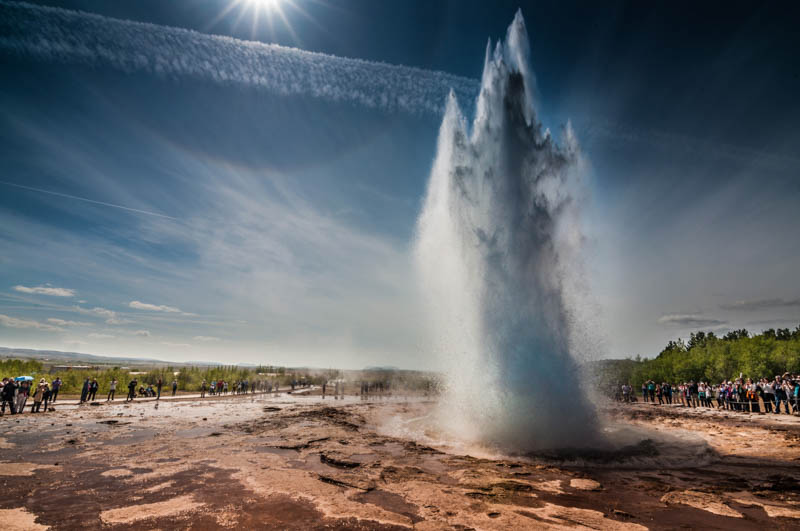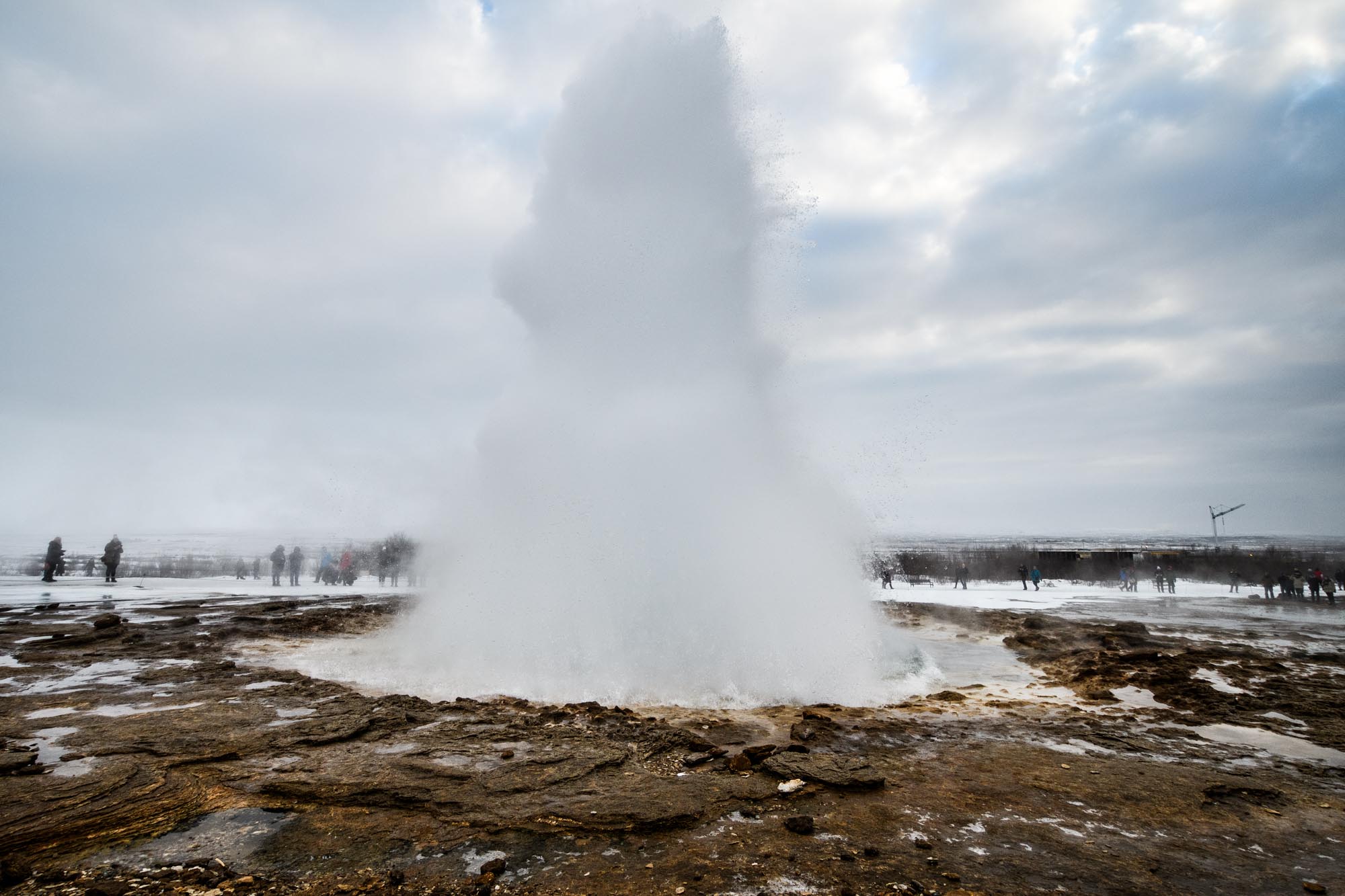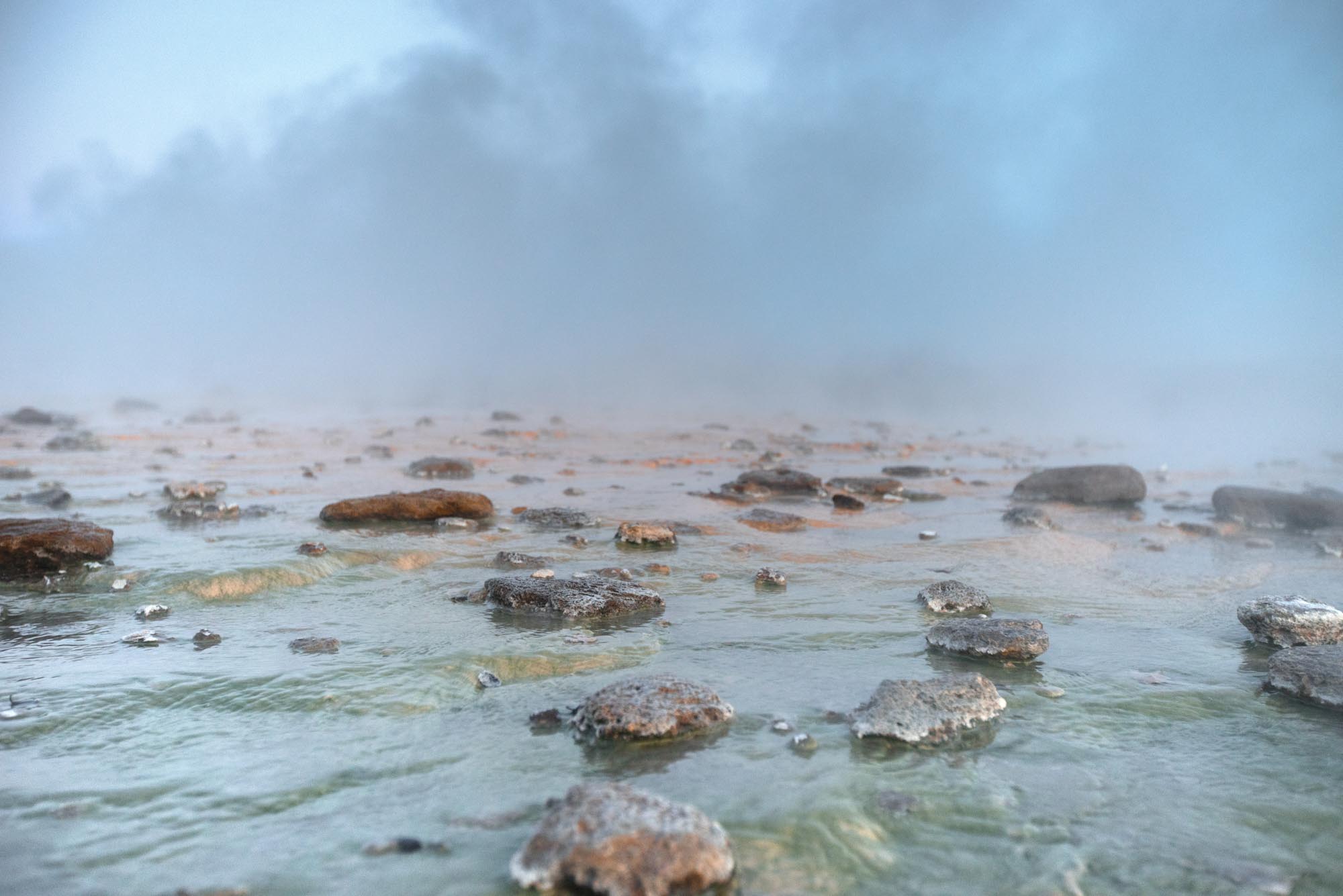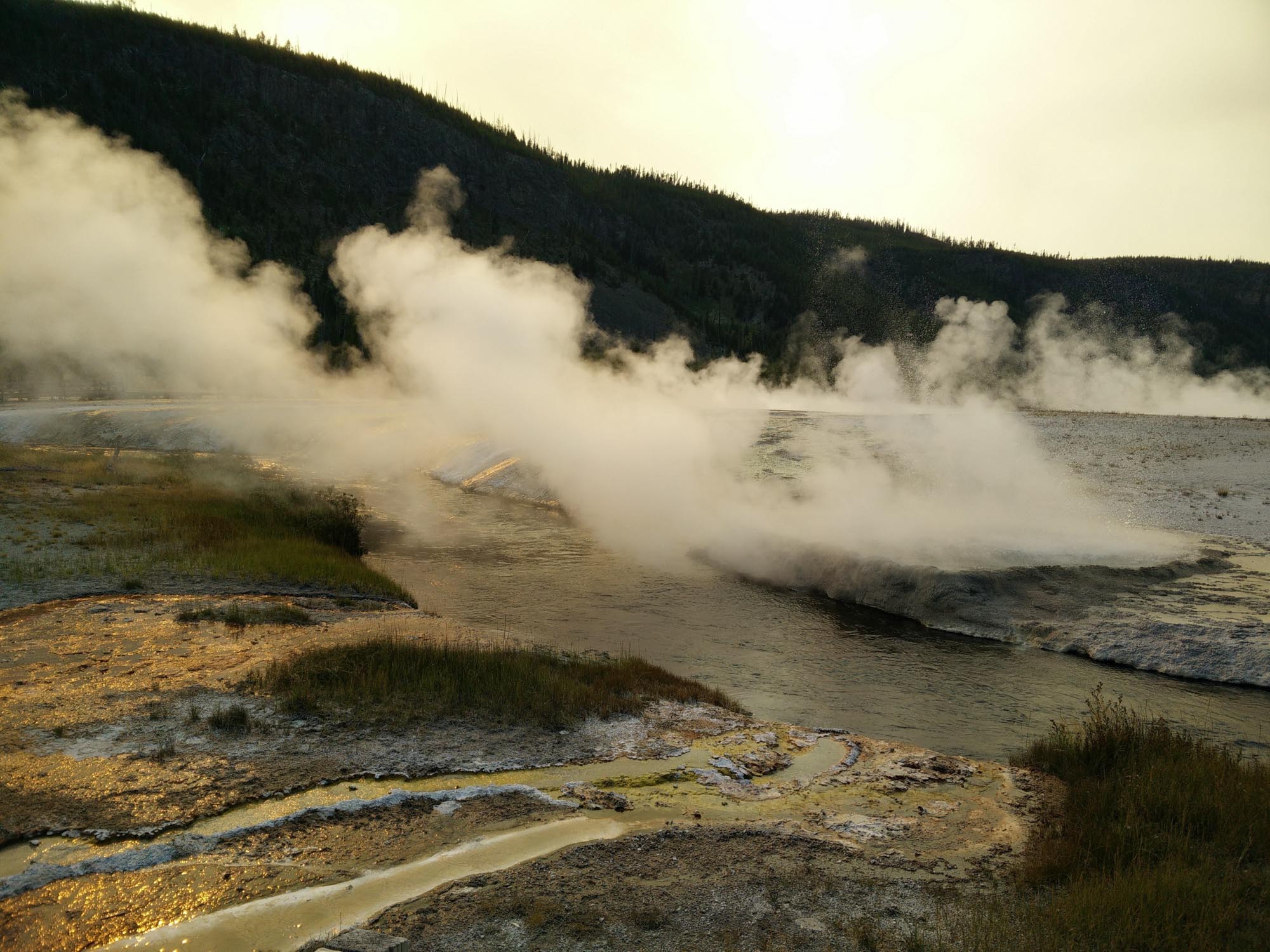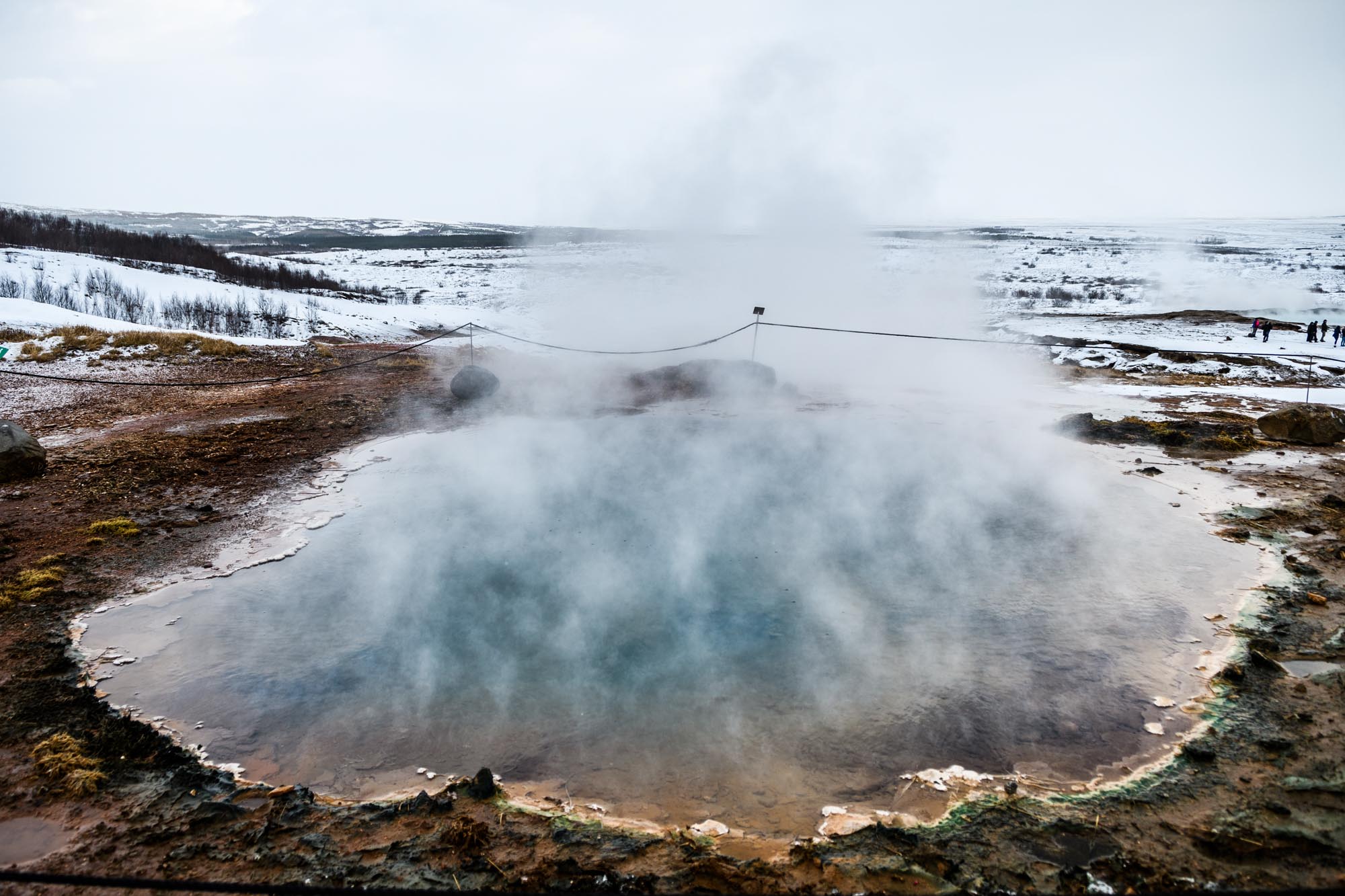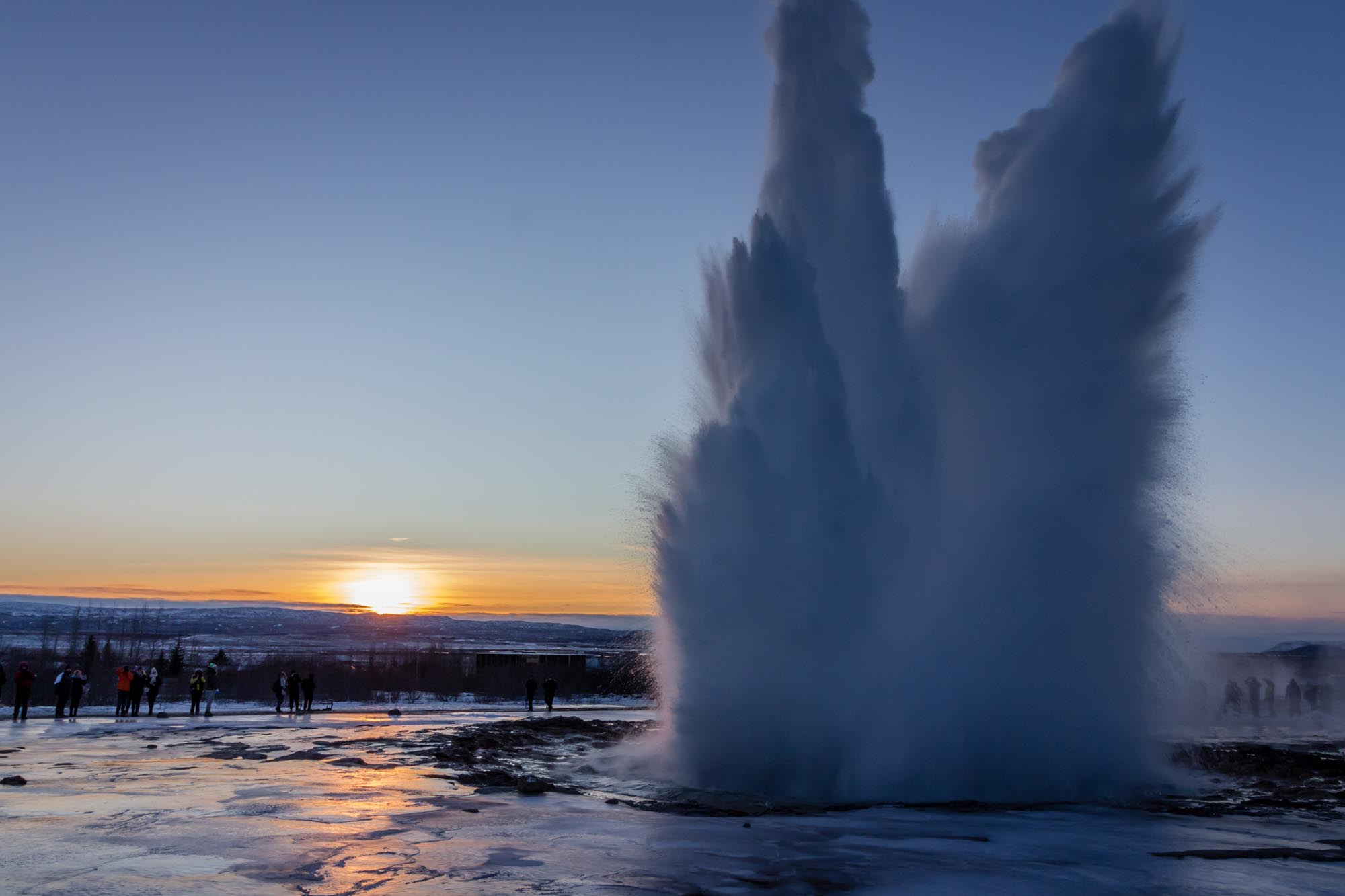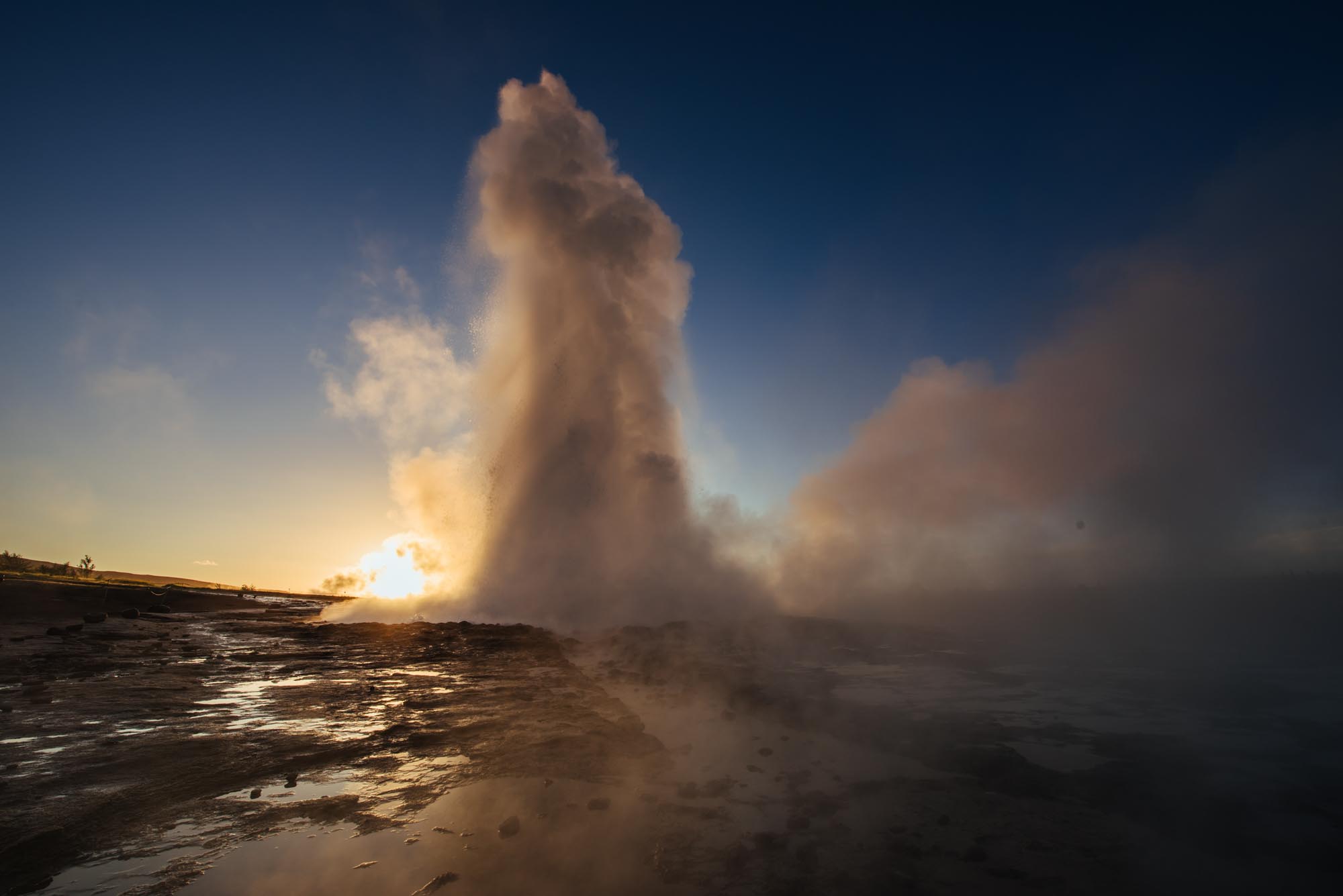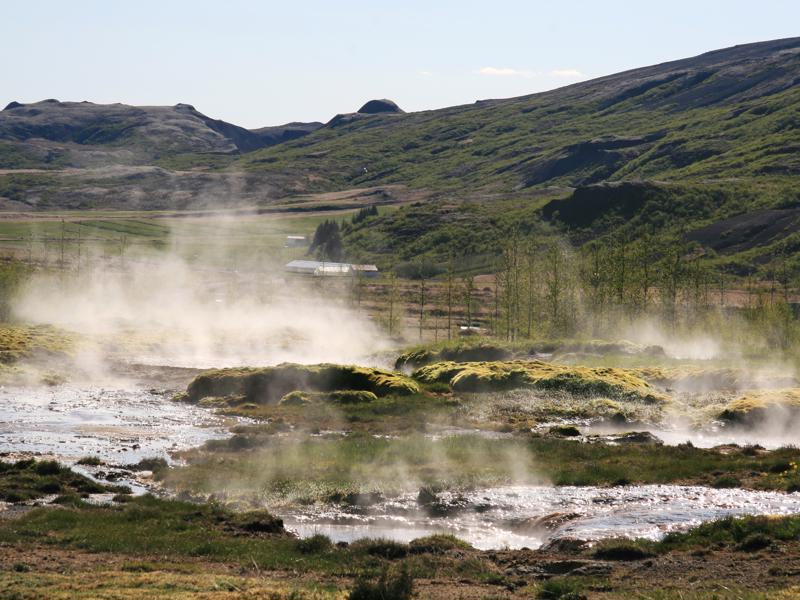Geysir Geothermal Area
Geysir Geothermal Area
Geysir is the only place in Iceland where you can easily observe a spouting hot spring or geyser.
In fact, there are only a few places in the world where geysers are found. Unlike in some parts of the world, where soap is added to make the geyser perform, Iceland’s geyser Strokkur needs no encouragement, erupting of its own accord every few minutes.
Try and photograph its bluish-green bubble just before it bursts.
Geysir is the name of a larger spouting hot spring on the same site and was mentioned in writing as early as the 13th century.
The word, meaning 'gusher' or 'spouter', was adopted into the English language and eventually ‘geyser’ became the name by which all other spouting springs became known around the world.
Regretfully Geysir does not erupt regularly but once in a while, it has come back to life briefly after an earthquake. There are other hot springs on the site; Blesi has twin blue pools, the hotter of the two has clear water, while in the cooler one the water appears cloudy due to the high silica content.
Konungshver, 'Kings's Spring' was named in honor of the Danish King Christian IX, who visited the site in 1874.
In the summer of 1893, a wealthy Irishman, James Craig visited the Geysir area. There he met the farmers who had been trying without success to sell the area to the government.
They were tired of having to offer hospitality to visitors, a great drain on their meager resources. In the spring of 1894, he bought the land for DKK 3,000.
Craig’s family was unhappy with his decision to waste the family's money on a geothermal area in faraway Iceland. In due course, he gave the Geysir area to his friend, E.Rogers, who had never been to Iceland and had no interest in the land.
In 1935, Sigurdur Jonasson, a wealthy Icelandic businessman, bought the Geysir area for ISK 8,000 and gave it to the Icelandic state. He remarked: “Personally I think the Icelandic state should own this unique treasure Geysir, and do everything it can to protect the area for future generations.
The area should, of course, be a national park.”
Over 80 years later, the issue of ownership and responsibility is still a point of discussion! Plans are underway to improve access and safety at the site over the coming years.
You can walk to the top of the hill behind Geysir for a wider view of the site. Unless you want a hot shower, stand upwind of the geyser and for your own safety don’t cross the rope barriers and please don’t throw coins or anything else into the hot springs.
At Geysir, you’ll find a cafe, restaurant, excellent souvenir shop, and toilets.


